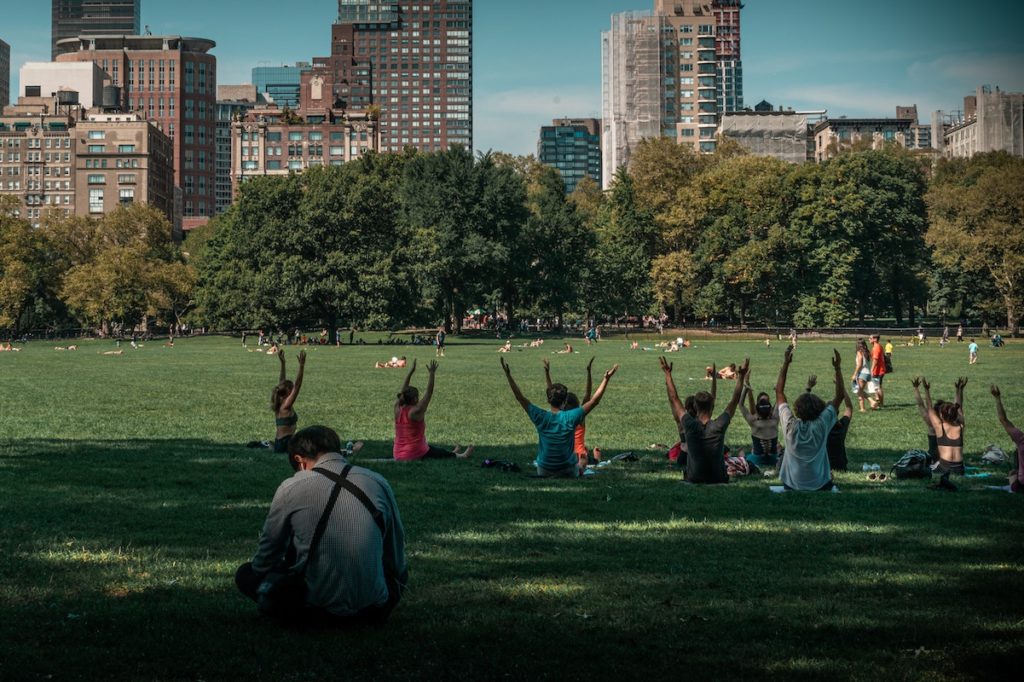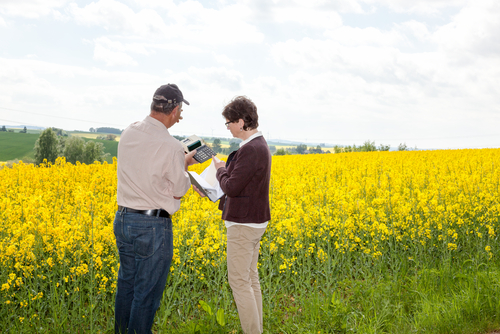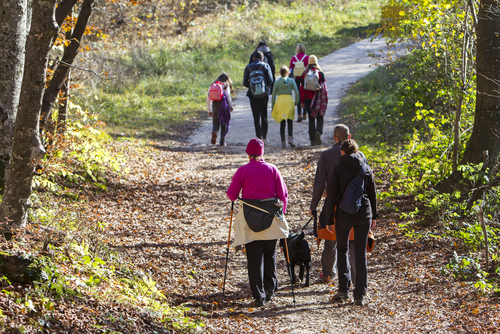
Have you ever wondered why your mood is not as great since you moved to the city? Maybe you still live far away from urban areas and this question has never crossed your mind. By 2050, you or your descendants will be more likely to experience the so-called “urbanisation” and become part of the majority (68%) of the global population that will live in the city (UN, 2018).
With this in mind, we should start thinking about the potential consequences of this urban lifestyle on our physical and mental health. For example, growing up in a city can double our chances to develop a psychotic disorder (Vassos et al, 2012). Research also suggests that living in an urban area with a high concentration of people, alongside poor city design, can increase your sense of loneliness (Vassos et al, 2012; Holt-Lunstad et al, 2015) and, in the long term, can lead to depressive disorders (Gong et al, 2016).
However, do not despair! There are a handful of prevention strategies that might help you deal with the incumbent stress of urban development. And guess what? They have to do with the opposite of urbanisation, which is the nature. It might not be surprising that activities such as walking in a park and doing something nice outdoors with your best pal or a new acquaintance can help you fulfil that need for clean air and company that the city has taught you to repress! (Giles-Corti et al, 2016).
Although this may sound great, we still need to understand which activities in particular can best prevent the potential consequences of living in a city and whether these are related to physical activity or not. Therefore, Coventry et al. (2019) have come to our rescue by conducting a mixed-methods study on the evaluation of the effectiveness of three different activities in three different public green spaces.

Growing up in a city can double your chances of developing a psychotic disorder (Vassos et al, 2012).
Methods
The authors recruited conservation volunteers who attended green spaces managed by non-profit organisations and the research was conducted in one of the three sites: (a) Askham Bog, York, (b) St Nicks, York, or (c) a large green field, Barlby – all were natural or semi-natural spaces such as parks, public gardens, and forests/woods.
There were three different types of activities, all lasting 20-30 minutes:
- Group walks (small groups walking without social interaction): the most passive and least interactive activity;
- Citizen Science (assessing the impact of pollution on the environment): socially interactive and restorative activity;
- Conservation (e.g. flood mitigation and creating wildlife habitats): interactive, restorative, and physical activity.
The outcome measures were collected alongside baseline demographic variables. The participants’ subjective wellbeing over the last two weeks was measured by the self-reported questionnaire “Short Warwick-Edinburgh Mental-Wellbeing Scale”, and their acute subjective mood changes was assessed using another self-reported questionnaire, the University of Wales Institute of Science and Technology, which was completed before and after the completion of the activities.
After 8 weeks post-activities, a sample of participants was asked to complete semi-structured interviews on their motivations to continue these outdoor activities. Quantitative analyses included between-group comparisons with repeated measures, one-way ANOVA and a post-hoc pairwise Bonferonni correction for multiple comparison. Qualitative data were coded into themes using thematic analysis.

The quantity of green space in the living environment is positively associated with perceived mental health and general health too.
Results
The final sample included 45 participants, however nine of them took part in multiple activities, which resulted in 65 independent observations.
The quantitative analyses suggested that the participants displayed an overall positive change in terms of mood from pre- to post-activity, although this was independent from both the location and the type of activity. The only exception was the green area of St Nick, where the stress was significantly lower after the activity.
The main themes that emerged from 8 semi-structured interviews with volunteers and staff members were the following:
Predisposition and activation
The majority of the participants preferred green areas where the impact of men was less visible and where there were less people.
“I like wild spaces where there has been less obvious or lower levels of human management.”
Motivation for continuing
Many participants were keen to continue the activities if they felt that they were purposeful and meaningful, dedicated to environmental improvement, and done within the same group they had at the beginning.
“You can see the changes that we have made in some reserves. Some of the reserves we have made a real difference to.”
Health and mental health benefits
Importance was given to their satisfaction, the improvements in mood, sense of agency in terms of controlling how the activity was undertaken, possibility to learn something new, and balance between social interaction and being on their own.
“A good thing is that you are at liberty if you don’t like the way that you have been told to do something to do it a different way if you can think of something better.”

This research suggests that outdoor activities can result in positive mood changes, engagement with purposeful activities in the future, satisfaction and opportunities to learn new skills.
Conclusions
Through their pilot study, Coventry et al. (2019) showed promising results for the use of public green spaces in both urban and semi-urban areas and how that is associated with mental and physical health benefits. A randomised evaluation of benefits across targeted populations at risk is now needed.

Although this study suggest that outdoor activities in green spaces might be beneficial to individuals, further (randomised) research is needed.
Strengths and limitations
The study is a great addition to the literature, since it suggests new evidence on positive associations between engagement with green spaces and nature (e.g. parks) and positive health outcomes especially around physical and mental wellbeing, which is a major goal for public health. The researchers explored three different experimental sites and the participants were offered a variety of different types of activities, leading to a better understanding of what works better in terms of activities and location.
One of the main limitations of this study is the danger of selection bias: all participants were conservation volunteers and were more likely to be engaged in outdoor activities and experience benefits because of their engagement with nature. In order to balance that, the researchers offered volunteers a variety of different activities that were new to them and there was no drop-out. Due to the nature of this study (being a pilot study) the sample size was quite small for both quantitative and qualitative data, but the evidence suggested can be considered a pillar for future studies exploring these outcomes in bigger samples and more targeted populations e.g. children, older adults, people with severe mental health difficulties. The study focused only on hedonic aspects of wellbeing. A variety of outcomes is yet to be associated with nature and green spaces including self-reported happiness and eudaimonic wellbeing, quality of life, stress levels, cognitive functioning and physical outcomes.

One of the main limitations of this study is the danger of selection bias: all participants were conservation volunteers and were more likely to be engaged in outdoor activities and experience benefits because of their engagement with nature.
Implications for practice
Exciting as it sounds, there’s lots of room for developing effective and low-cost interventions by using community assets that are free and can be applied at a population level to promote wellbeing and protect people from mental illnesses linked to the urban environment. Engaging with and exploring the surrounding natural environment through walking (hiking as well for future reference) and conservation, are activities that can be used by all people, across all ages and at no cost. Can these promising results also lead to shorter waiting lists for talking therapies, minimisation of barriers to treatment, better coping with stress and depression, and self-development?
This study also highlights research opportunities exploring public green spaces and how we can use community assets in urban and semi-urban centres for prevention. Future studies should explore the association of outdoor activities with both eudaimonic and hedonic well-being and focus on vulnerable populations at higher risk of mental health outcomes, e.g. children and how nature and outdoor spaces can be used as a protective factor against urban stresses. Among other public health priorities, promoting good health is crucial, so it’s really important to evaluate the effectiveness of purposeful activities and build an evidence-base around community assets including natural spaces.

The results of the study can be used to develop cost-effective interventions and inspire the formulation of new studies on the benefits of outdoor activities.
Conflicts of interest
None.
Links
Primary paper
Coventry, P., Neale, C., Dyke, A., Pateman, R., & Cinderby, S. (2019). The Mental Health Benefits of Purposeful Activities in Public Green Spaces in Urban and Semi-Urban Neighbourhoods: A Mixed-Methods Pilot and Proof of Concept Study. International Journal Of Environmental Research And Public Health, 16(15), 2712. doi: 10.3390/ijerph16152712
Other references
United Nations. World Urbanisation Prospects: The 2018 Revision (PDF). Available online: (accessed on 24 May 2019).
Vassos, E.; Pedersen, C.B.; Murray, R.M.; Collier, D.A.; Lewis, C.M. Meta-analysis of the association of urbanicity with schizophrenia. Bull. 2012, 38, 1118–1123. [CrossRef] [PubMed]
Holt-Lunstad, J.; Smith, T.B.; Baker, M.; Harris, T.; Stephenson, D. Loneliness and social isolation as risk factors for mortality: A meta-analytic review. Perspect Psychol. Sci. 2015, 10, 227–237. [CrossRef] [PubMed]
Gong, Y.; Palmer, S.; Gallacher, J.; Marsden, T.; Fone, D. A systematic review of the relationship between objective measurements of the urban environment and psychological distress. Int. 2016, 96, 48–57. [CrossRef] [PubMed]
Giles-Corti, B.; Vernez-Moudon, A.; Reis, R.; Turrell, G.; Dannenberg, A.L.; Badland, H.; Foster, S.; Lowe, M.; Sallis, J.F.; Stevenson, M.; et al. City planning and population health: A global challenge. Lancet 2016, 388, 2912–2924. [CrossRef]
Photo credits
- Photo by Valentin on Unsplash
- Photo by Alex Simpson on Unsplash
